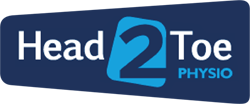Temporomandibular Disorder
There is an increasing need to address facial symptoms associated with the temporomandibular joint (TMJ) but a huge lack of education around it.
What is incredibly interesting, is research shows:-
Temporomandibular Disorder is the second most common chronic musculoskeletal Disorder, after chronic Low Back Pain.
What is it?
Temporomandibular disorder (TMD) is a collective term, relating to problems involving the masticatory muscles (chewing), the temporomandibular joint (jaw) and associated structures.
Why is the condition often overlooked?
- Lack of understanding or awareness
- Lack of education and therefore being ineffective in helping patients
- Lack of knowledge from a patient perspective of who to seek help from
Symptoms that you maybe experiencing
- Clicking of the jaw with or without pain
- Pain in the jaw and and/or associated neck muscles
- Restricted movement of the jaw
- Locking of the jaw
- Teeth grinding day and/or night
- Headaches
We are here to help
Seek expert advice from us and gain a specialist assessment, including explanation of anatomy and why the condition is occurring, and then how to manage going forwards.
Setting SMART goals to progress to recovery.
Prescribing exercises and other treatment where needed, and appropriate.
All our Physiotherapists are highly qualified, experienced, with a variety of post graduate specialisations. If you or anyone you know would like to have a physiotherapy assessment with the team at Dorking , Leatherhead or Crawley , book online here or contact us here.
Blog post written by Laura Moore, Senior Physiotherapist, at our Crawley Clinic. Laura has specialist training in how to manage TMD and TMJ disorders.






